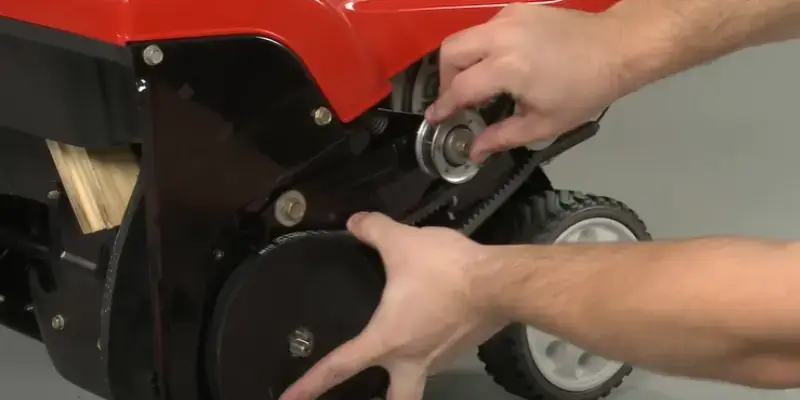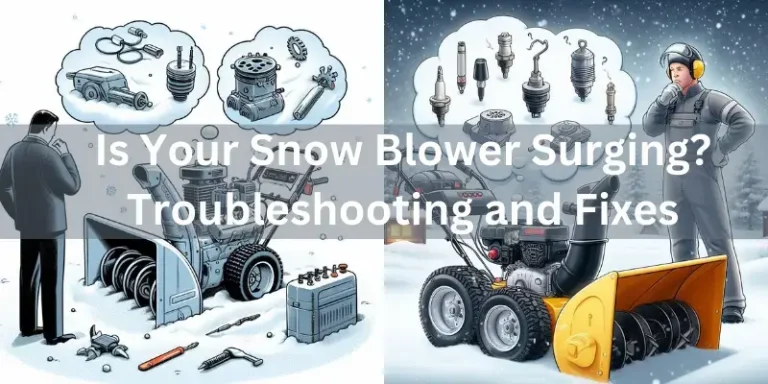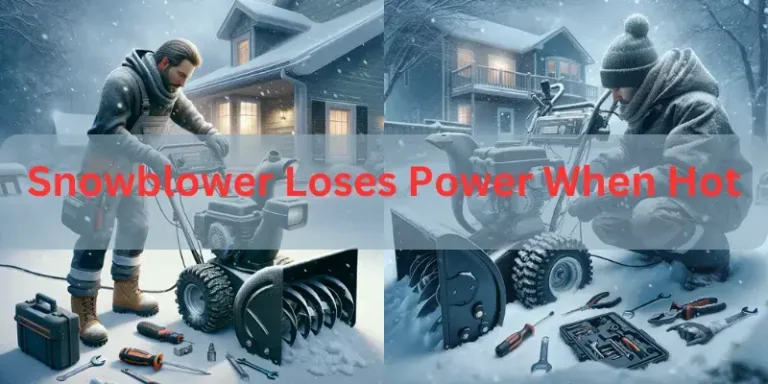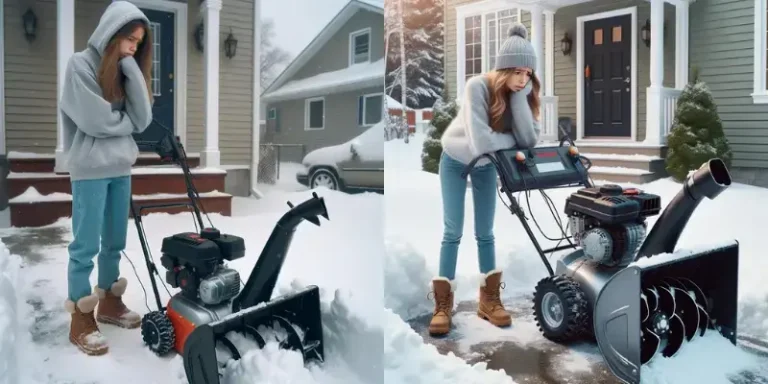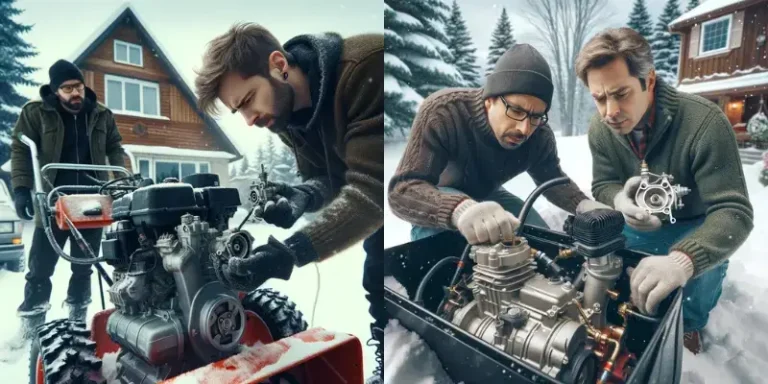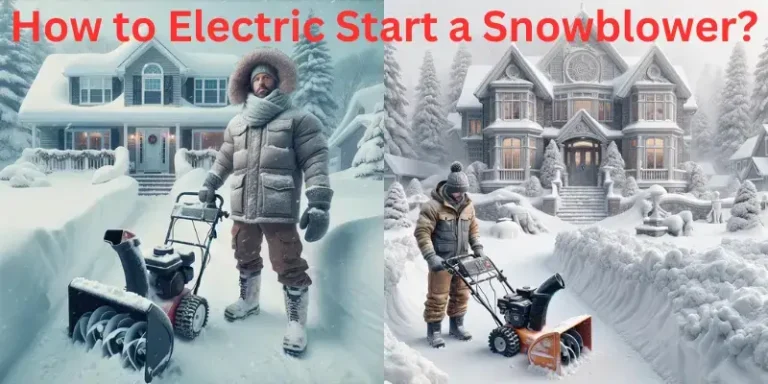Should Snowblower Auger Turn by Hand?
As the snow melts and spring starts to come, you might want to put away your snowblower until next winter. But wait! Before you do that, there is an important question to consider: should you be able to turn the auger by hand?
This question might seem simple, but it is really important for keeping your snowblower in good shape and making sure it works well when you need it. If the auger spins too easily, it could mean there is a problem. If it is hard to turn, there might be hidden issues.
But don’t worry! This guide will help you understand how the auger should move and make sure your snowblower is ready for the next big snowstorm. So, let’s learn about how the auger works and also about what to look for to take care of your snowblower. Remember, learning about your snowblower now will make things easier when winter comes back around! Keep reading…!
What is a Snowblower Auger?
The snowblower’s auger is the spinning spiral thing at the front that breaks up, gathers, and throws snow into the chute. It’s like the hard worker of your snowblower, clearing the snow from your path.
Types of Auger:
There are two main types:
Single-stage: These have rubber paddles to pick up and throw snow in one go. They are good for light snow on smooth surfaces.
Two-stage: These use metal blades to cut through deeper snow and send it to a fast-spinning thing that shoots it out of the chute. They are better for heavy snow and rough terrain.
The Auger’s key features include:
its spiral-shaped design, which helps scoop and crush the snow efficiently. Powered by the engine or motor, it rotates to draw in and propel the snow, making it essential for the snowblower’s operation. The material used varies depending on the type: single-stage augers utilize rubber paddles for gentler contact, while two-stage ones employ metal blades for more heavy tasks.
Located at the front of the snowblower, the auger directly engages with the snow, ensuring effective snow removal. It is crucial to understand the auger’s role and maintain it properly to keep your snowblower in top condition for winter.
How does Snowblower Auger work?
The snowblower auger efficiently tackles snow removal by harnessing power from the engine or motor, which is transmitted through a system of belts, gears, and pulleys to rotate a spiral-shaped mechanism.
This mechanism, composed of either rubber paddles or metal blades, effectively breaks up and moves the snow towards the center of the machine. In single-stage models, the auger directly expels the snow through the discharge chute, while in two-stage models, it directs the snow to an impeller for more forceful ejection.
Regular maintenance, including checks for loose parts, signs of wear, and proper lubrication, ensures smooth operation and keeps the auger in top condition for the next snowstorm.
What turns the Auger on a Snowblower?
The activation of the auger on a snowblower varies depending on its type. In single-stage snowblowers, the engine’s power is directly linked to the auger shaft through a belt or pulley system, with engagement typically initiated by squeezing a handle. This direct connection causes the auger to spin when the drive system is engaged.
Conversely, two-stage snow blowers feature a more intricate drivetrain, incorporating multiple belts, pulleys, and gears. Activation of the drive system triggers specific combinations of belts or pulleys, transmitting power from the engine to both the auger and impeller, which throws the snow. Gears often facilitate a 90-degree turn from the engine shaft to the auger shaft.
Electric snow blowers, utilizing an electric motor instead of an engine, follow a similar operational principle, powering the auger through belts or gears. The specific levers or controls that engage the auger might vary depending on the model and manufacturer. However, they all activate the mechanism that transmits power from the engine or motor to the auger shaft.
Always consult your snowblower’s manual for specific instructions on engaging the auger and other controls.
Should a Snowblower Auger turn by hand?
Determining whether your snowblower’s auger should turn by hand involves considering several factors.
Firstly, the auger’s position is crucial; when engaged, it should not turn freely to prevent potential damage to gears or other components powered by the engine. Conversely, when disengaged, it may exhibit some resistance due to bearings, belts, and gear mesh, but it should still move with moderate effort.
The type of snowblower you have also plays a role, as single-stage models typically have simpler auger mechanisms and may turn more freely even when disengaged, whereas two-stage models may display more resistance or be locked when disengaged due to their complex gearboxes.
Additionally, checking for obstructions like debris, ice, or snow buildup inside the auger housing is essential. After recent use, warm grease may make the auger harder to turn by hand, so allowing it to cool down before inspection is advisable.
It’s recommended to consult the snowblower’s manual for specific guidance on auger operation and troubleshooting steps. Performing a visual inspection for damage or loose parts and attempting to turn the auger with moderate force can help assess its condition. However, if uncertain or uncomfortable with the assessment, seeking professional assistance is advisable to prevent further damage. Remember, forcing the auger to turn could exacerbate any issues, so exercising caution is paramount.
How do you Control Auger?
Operating the auger on a snowblower involves utilizing the machine’s levers and understanding its construction. Typically, snowblowers feature two controls—one for the auger and another for the drive system (wheels)—allowing independent engagement or disengagement of each function.
These controls are often levers or triggers, with some models incorporating a foot pedal for auger control. In single-stage snowblowers, a single belt connects the engine directly to the auger, while in two-stage models, a more complex drivetrain manages both the auger and impeller.
Electric models follow similar control principles but utilize levers or buttons instead of engine-based engagement.
Consulting the manual for specific instructions is crucial, and practicing in a clear area before snow use is recommended.
Additionally, starting with the auger alone, observing its function, and releasing both levers to stop ensure safe and effective snowblower operation.
Why is the Auger not Spinning on my Snowblower?
The auger may not be spinning due to several potential reasons:
Broken shear pin or bolt: This is the most common cause and is designed to break and protect the engine if the auger hits something hard. It needs to be replaced.
Worn or loose belt: The belt transfers power from the engine to the auger. If it’s worn, it should be inspected and replaced; if loose, its tension should be adjusted.
Seized bearings: Bearings allow the auger shaft to rotate smoothly. If they’re seized, they need to be lubricated or replaced.
Damaged gear: This indicates an internal gearbox issue, requiring consultation with a professional for repair.
Frequently Asked Questions
Why does my snowblower impeller turn freely?
Some snowblowers feature separate controls for the auger and impeller, allowing for independent operation. It’s important to verify whether the auger lever is engaged to ensure the auger’s functionality. Additionally, if there’s a broken shear pin or bolt, it might specifically impact the impeller, similar to how it affects the auger but only affecting the impeller’s operation.
How fast should a snowblower auger turn?
Varies by model, consult your manual for specific RPM range. Generally, faster for heavier snow/larger machines.
Half of the snowblower auger not turning?
Broken auger shaft, loose connection, or internal damage. Consult a professional.
Snowblower impeller and auger not turning?
Drive system issue, check belts/gears or consult a professional. Snowblower auger turning slow.
My Final Thoughts:
As winter fades and thoughts shift to storing your snowblower, it’s essential to address whether its auger should turn freely by hand. This simple question holds significance for maintaining the machine’s functionality. Understanding common issues like broken shear pins, worn belts, and seized bearings ensures proper maintenance. Consulting the manual for guidance and practicing safe control techniques are key for efficient operation. By tending to your snowblower now, you’ll be ready for next winter’s challenges.

About Naveed A Hashmi
In my childhood, I used to see my parents while working in the land, for these reasons today I have been serving the same as our own tradition and culture. I thus love to stay in it, because I want to learn something advanced and new so that I may improve my farm’s contour and help others with my experience.

